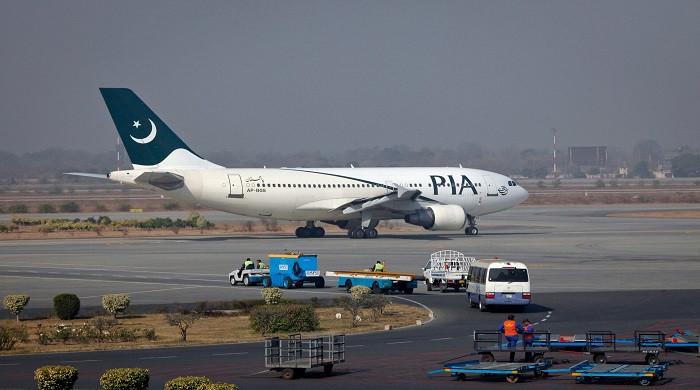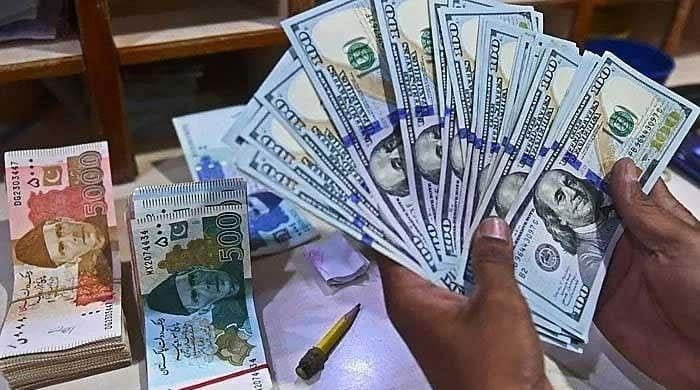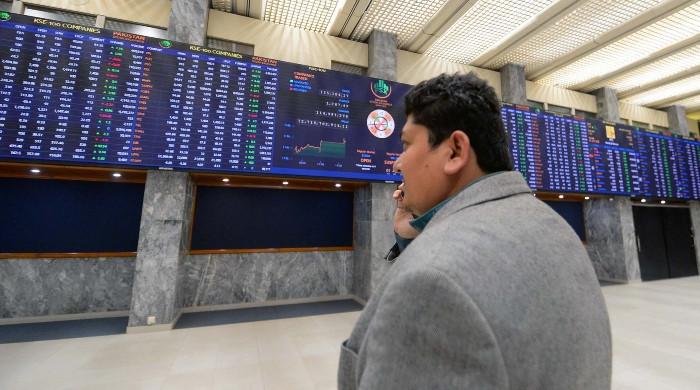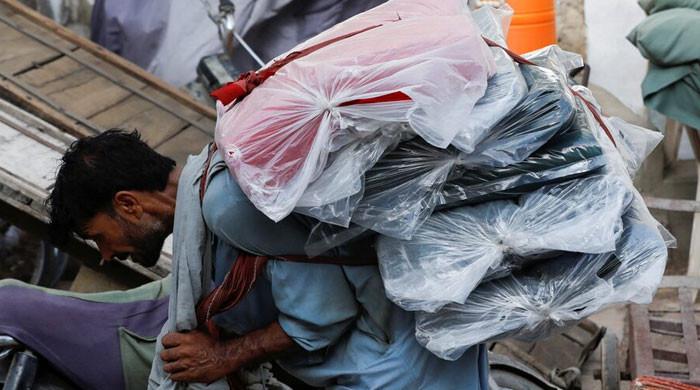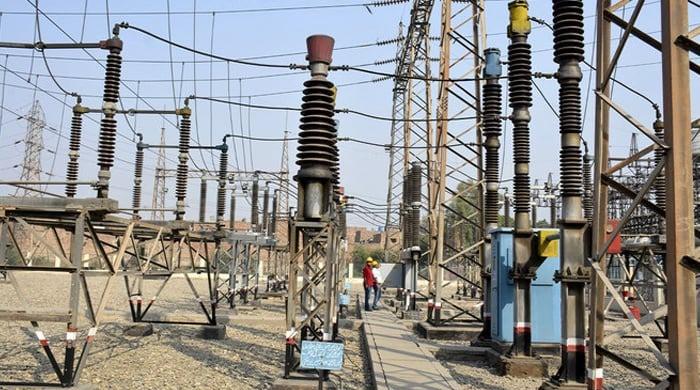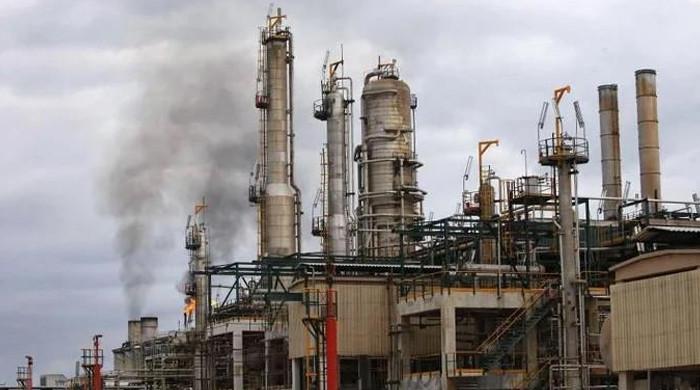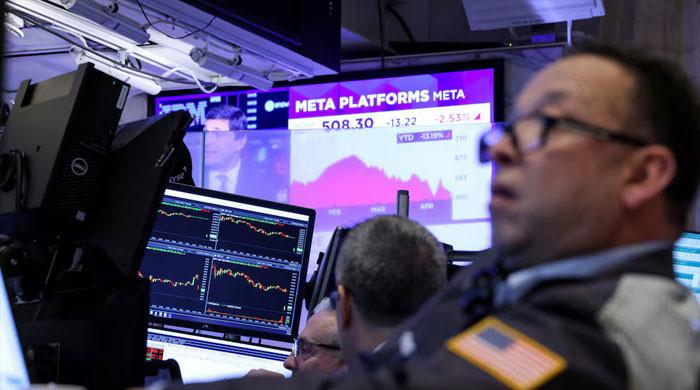Pakistan to soon plug $4b external financing hole: SBP
Islamabad trying for $4b inflows from friendly countries like Saudi Arabia, UAE and Qatar, says SBP acting governor
August 08, 2022
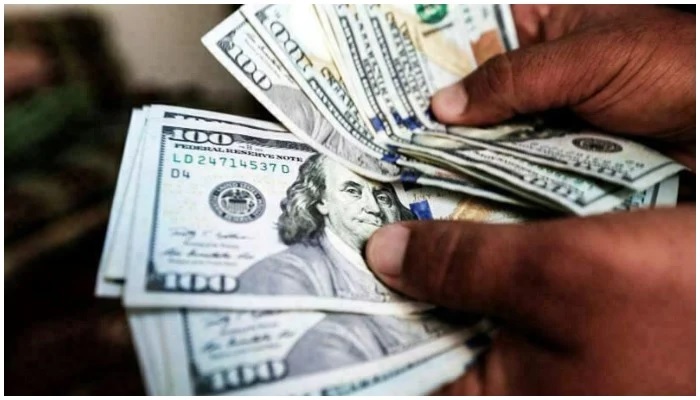
- Pakistan to soon bridge external financing gap of $4 billion, says SBP.
- Islamabad making efforts to get confirmation of $4 billion inflows from friendly countries such as Saudi Arabia, the UAE, and Qatar, says SBP acting governor SBP.
- He was reluctant to share any time-frame to bridge financing gap of $4 billion but said that it would be managed soon
ISLAMABAD: Pakistan will soon bridge its external financing gap of $4 billion with the help of friendly countries under the IMF condition in the face of huge pressure on foreign currency reserves, says State Bank of Pakistan (SBP) Acting Governor Dr Murtaza Syed.
He also conceded that inflation would persist in a higher range for the next 11 to 12 months, so the central bank was seeking an inflation target in the range of 18-20 percent on an average for the current fiscal year 2022-23.
SBP Acting Governor Dr Murtaza Syed, in an exclusive interview with The News at the SBP Building in Islamabad this weekend, said Pakistan has already managed gross external financing requirements of $34 to $35 billion but in addition, Islamabad is making efforts to get confirmation of $4 billion inflows from friendly countries such as Saudi Arabia, the UAE, and Qatar. “These additional dollar inflows will be materialised for increasing foreign currency reserves position to create a buffer in case of a crisis-like situation.”
He was reluctant to share any time-frame for bridging the financing gap of $4 billion but said that it would be managed soon. He contended that both the government and IMF high-ups were making efforts to get confirmation from respective countries and it would be done very soon.
Denying the situation was like Sri Lanka, he appreciated Bangladesh and said that they behaved responsibly and preferred to go back to the IMF and also raised prices of utilities while possessing sufficient levels of foreign currency reserves.
Talking about higher inflation, he was of the view that international supply disruptions paved the way for an international super cycle of commodities and Pakistan would have no other option but to focus on agriculture productivity to ensure food security.
Murtaza Syed said that there was no magic wand for controlling higher inflation on an immediate basis, so people would have to face this difficult time. “We know it is a difficult phase but there is no other choice to avoid a more difficult situation the country might have gone into in case of inaction,” he cautioned.
The official said that the SBP relaxed cash margin conditions on opening up L/Cs for imports and provide incentives to those who would open L/Cs for some time. He said that the IMF opposed trade restrictions and they also undertook some steps to avoid depletion of foreign currency reserves. Now it is hoped that the existing pressure on foreign reserves would evaporate in the next two months. He also advocated the conservation of energy for reducing pressure on import bills.
The senior official was of the view that Pakistan would continue to face boom and bust cycles without removing the structural problems of the economy. Citing a recent example, he said the country achieved GDP growth of 6 percent, so overheating of the economy resulted in creating imbalances known as the budget deficit and current account deficit. “We are not close to recession mode but there is a need to handle the economy in a careful manner,” he added.
When asked that the federal government sought an inflation target of 11 percent, he said inflation targeting could be measured on a medium-term basis, not on an annual basis. Secondly, the government fixed its target at 11 percent but the SBP had given its recommendation and finally expressed its stance on the occasion of the monetary policy committee meeting report.
He highlighted different reasons for imbalances but emphasized that the external financing gap of $34 or $35 billion was not a huge one keeping in view the experience of other countries but it became a headache in case of Pakistan because it became the primary responsibility of the government to manage this financing gap. In the case of other countries, he said the country’s private sector helped to manage some portion of the external financing gap by attracting foreign direct investment.
To another query about the exchange rate, Murtaza said that they took some administrative measures and conducted an onsite inspection of banks and exchange companies and imposed fine on those that were involved in wrongdoings. He said the SBP had intervened and would continue to intervene if it found any disorderly movement on the front of the exchange rate. He dispelled the impression that the IMF had given any specific rate on account of the exchange rate and argued that the rupee would not be managed artificially. However, speculators could not be allowed to do whatever they wanted to do, so the central bank would remain vigilant for taking action to stop the disorderly movement of exchange rate.
The SBP governor said that Pakistan would have to boost exports and foreign direct investment to avoid perpetual plunging into boom and bust cycles. “This boom and bust cycle cannot be overcome until the private sector attracts dollar inflows. Now currently the IMF helps to manage the external financing gap. When the Fund program ends, there is no binding force to pursue the country to stick to the path of reform process. Reversal occurred on structural reform process and the country ended up facing imbalances on internal and external front of the economy,” he added.
He was of the view that some developed economies might be facing recession but Pakistan’s economy would be stabilised through a slowdown though it could still achieve a decent growth figure of 3 to 4 percent for the current fiscal year.
He said the country was not facing a debt crisis and its overall public debt was still in a manageable position. However, its external financing requirement ballooned at this juncture when the world was facing a super cycle of commodities and POL prices. He said the SBP possessed $8.5 billion in liquid foreign currency reserves and it did not include $4 billion in the shape of gold. “If these are not liquid reserves, then the IMF should have raised objections over it,” he made it clear.
When asked how this recent crisis was triggered in Pakistan, Murtaza said that fuel subsidy was a wrong decision that irked the IMF. Secondly, the last fiscal year’s budget for 2021-22 also resulted in expansionary policies, so monetary policy also came into action with a time lag. He said that there was a lag in the availability of data, so it resulted into taking some time for policymakers to respond to emerging economic realities.
Murtaza Syed was of the view that the SBP should review the policy actions that it undertook in the aftermath of Covid-19 pandemic for learning lessons from the past mistakes, so that mistakes could be avoided in future policy action on the monetary front.
He said that uncertainty on economy or political front would serve no purpose, so the country required certainty and consistency on policies front to steer the economy out of the crisis mode and it could move towards the path of higher and sustainable growth. He added that Pakistan required higher growth on sustained basis for one to two decades in order to cater to job opportunities for its growing population.
The SBP governor said a better coordination mechanism could be devised even after abolishing the Monetary and Fiscal Coordination Board between the Ministry of Finance and State Bank of Pakistan. “It was the view of international lenders that the Ministry of Finance was dictating the monetary policy due to which this board was abolished under the fresh act,” he added.
Originally published in The News




